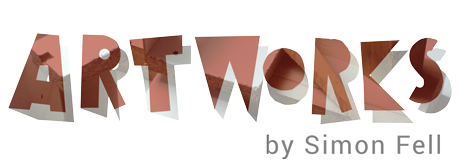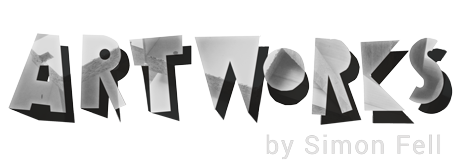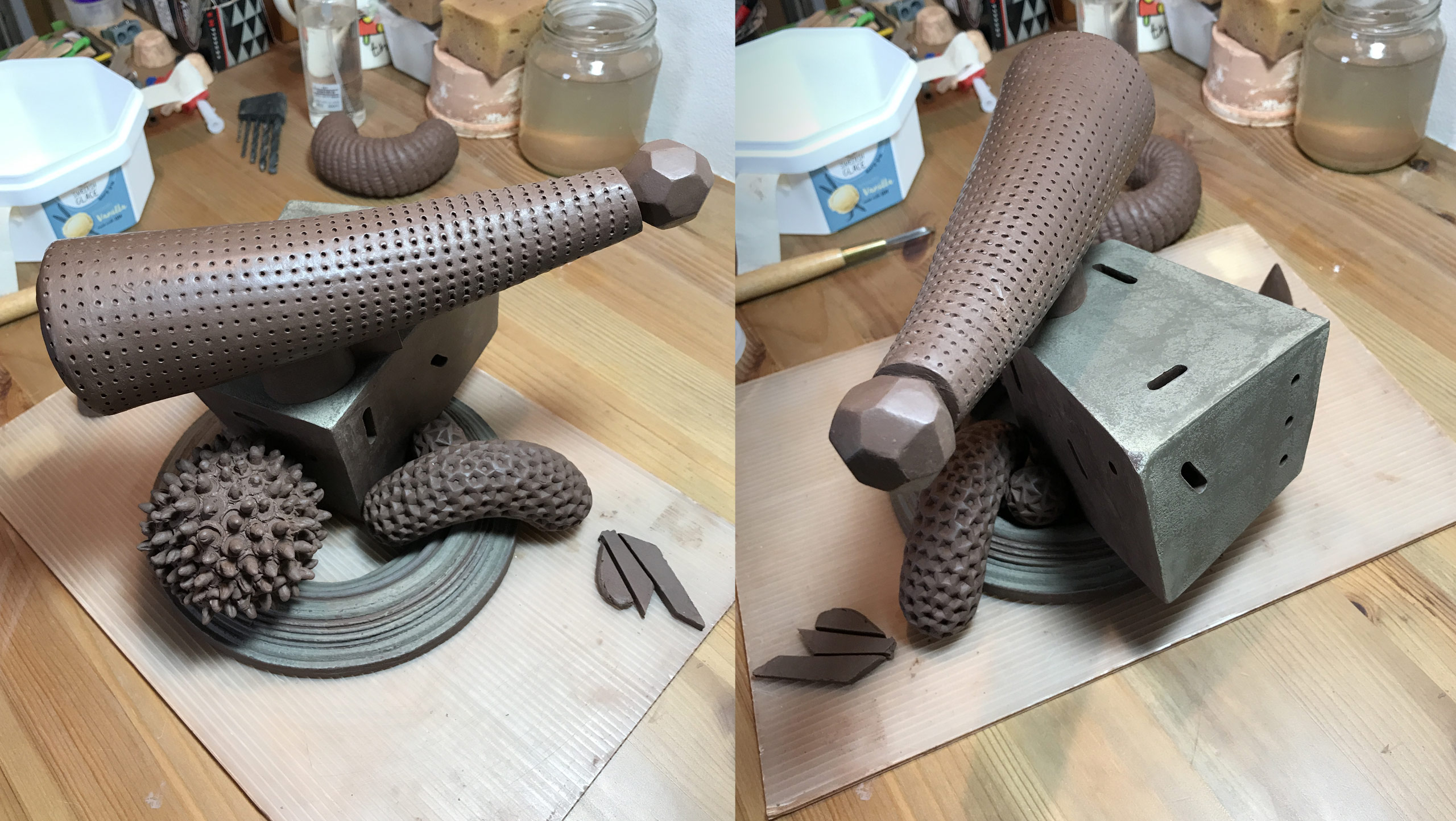Artists Open House (AoH) festival in Brighton published an interview that Idil Bozkurt did with me in spring 2019. We spoke about the lockdown and how it has affected my work but the main theme was making a start with video blogging.
How it came about
This appeal in the AoH newsletter was how the idea of a Zoom interview came about:
“We would love to hear from you on our new project: AOH Lockdown Blog
We are running a series of Blogs of Open House artists’ lockdown experiences; the ways in which the experience has influenced your work, the challenges and adaptations you have faced; new skills you may have learned and how it has inspired or changed the way you work.”
Below are my notes about the subjects covered (this is NOT a transcript of the video but it’s close)
Q1 – How and why did you come to start making video blogs?
It was largely the lockdown that prompted this move but there were a lot of things that happened in the two previous years that led to me being able to take this step.
I have been interested in Social Media for a long time, starting with Twitter about ten years ago. That was the main platform I used for a long time although I also used Pinterest too. Now I mainly use Instagram because it is visually led and Facebook because it has such a big slice of the market.
In the last couple of years I started researching Art marketing. A lot of material was coming from the US and targeting the UK as an untapped potential market. I looked at Ann Rae (Making Art Making Money) and also Cindy Hohman (Art Marketing Project) who I did some work with last year (unfortunately she has now closed that project). I also spoke with Miguel Mayer (ArtMBA) recently. Before this I also looked at UK art networking and advice projects which you can find on my Artists links page
Most of the social media art marketing stuff coming from the US is high powered, high risk and high cost and involves a big commitment in financial terms and also a big belief in the program. Most of this did not appeal to me, it turns out I am pretty cautious when it comes to spending large amounts of money. I have done plenty of marketing at art and craft fairs in the past that turned out to be very high risk with very hit and miss results.
My research into art marketing led me to a fairly consistent message that you have to create content for social media to work for you. The basic way to do this is to blog, but now video blogging is starting to be as important or more so. I had already realised that I could not write blogs at the required rate (at least one a week) to make it a viable medium for me. I tried a couple of times to maintain a stream of written blogs and just ran out of steam each time so I began to feel it was impossible and that maybe social media would just never work for me. So when I finally let myself contemplate the idea of video blogging after being advised to do so for the third or fourth time everything was primed to go.
Q2 – What are the important things to remember when making a video blog?
- Get started, try it out, see how easy it is, just do it.
- Work out how you want to work, is it a tour? Will you need close-ups of the work? Is it you talking to camera? Or will you need to cut in shots of the work?
- Can you film this on your own (got a tripod?) or do you need a camera person or someone to help in any other way?
- Have a bullet point script or a running order worked out.
- Run through what you are going to say and check any external references you need to make (eg, Other artists names, titles of works, historical dates etc)
- Go rapidly to the stuff that really enthuses you that you can talk spontaneously about – as video really conveys confidence (and doubt)
- It’s quite good to move about, handle things, show things to the camera – but that also makes it more complicated.
- Rehearse any moving about to see if it works.
- Work out how to show the work effectively, close ups, zoom-ins on detail – you can cut in photos or videos of work later if necessary.
- You can always edit the video after in iMovie (or similar) if you have to but personally I like the roughness of leaving the speaking style authentic and not too polished. Plus video editing is quite laborious – even in streamlined apps like iMovie.
- It’s ok to be nervous, just think of it as a form of excitement/energy. Your energy is what brings the video to life.
- Try working with the equipment you already have e.g. just a mobile phone/camera, rather than thinking you have to buy a lot of technical gear before you can even start.
- Wear different things each time you make a new movie – or it looks like you have only one set of clothes!
Q3 – And what should you not do
Although it took me really a long time to get ready to do this (I had to change my attitude to standing in front of a camera before I could start) I would suggest people give it a go and see how it feels.
Don’t over think it. We are are very used to seeing professionally produced media on TV and online now. This stuff is something else, IGTV type movies are informal, sometimes spontaneous and of the moment rather than something to be slaved over and honed until they are perfect. Speed is important too.
Don’t think you have to buy equipment before you can start – No tripod? – lean the phone against a cup.
Don’t eat crisps or biscuits just before you start filming. In one of my IGTV movies I made this mistake and if you look closely you can see the results – basic rookie error!
Don’t send it out if you don’t like it – you can try again or send it to trusted friends for feedback first.
Q4 – What are the best ways to engage an audience when talking about the work you are making?
My approach is to show things and demonstrate techniques on video or in photographs and post them on social media. I expect people are curious about how things are done but also why you do things, how you choose what to make, how your ideas come about and develop. Sketchbooks and drawings can help show the development of ideas especially in contrast to a finished work.
I think it’s quite hard to imagine what other people are going to think about what you say and what you make. So I suggest you talk about what really interests and excites you and make what you want. Anything else is likely to come across as less authentic, less essential.
Keep it short. You may feel that you have not said enough, that you missed something out but people on social media have a very short attention span so it is better to err on the side of brevity.
Q5 – Can you tell us about the work you are currently making?
I am currently working on a series of ceramic still-lives. Of course they have a twist to them, they are part architectural and part organic and suggestive. This is a change from all the figures I was making in 2019. The work uses a lot of textures and I am starting to experiment with more intense ‘underglaze’ colours.
Q6 – Has the way you work and the ideas behind the work been affected by the current circumstances (lockdown)?
Yes it has to some extent. I think the ideas behind my work tend to have their own trajectory and momentum so that has not changed much as far as I can tell yet.
Practically I have had a bit more time making if anything, and my bedroom is gradually filling up with drying work. The work is starting to back up a bit as I don’t currently have my own kiln so I have a lot of work at the dry stage waiting to be bisque fired. This is beginning to be difficult as I usually have a stream of glaze and colour tests on the go and this has been interrupted by all the self-protective aspects of lockdown. I think this situation will speed up my acquisition of a kiln.
Q7 – Has making the video blogs changed the way you think and work?
Making the video blogs has given me a bit more confidence and a sense that there is an audience out there that I can access through social media. This way of telling my story is very well suited to Instagram and Facebook so I feel like I have found a spot within social media that I am actually comfortable with. I think social media generally tries to push people to make short jolly outbursts, something memorable that can easily ‘go viral’. That’s really not what I am doing, this is low key and reflective, this adds a little depth to what you can put in a Tweet or an Instagram caption. My videos are only around 5 minutes long so they are still modelled around what suits the medium.
Making the videos has given me a chance to review the works I have talked about. It has led me to reflect on how I can express or explain all the ideas that are wrapped up in them. I am often surprised how much material is woven into them and how long it takes to unravel, I sometimes think of things after I have made the video, sometimes I have to start again to include them.
Visual ideas are quite different to literal ideas and it takes time to translate things from one language into the other. Come to think of it I think maybe that’s the most significant and rich seam that this whole project has opened up.


